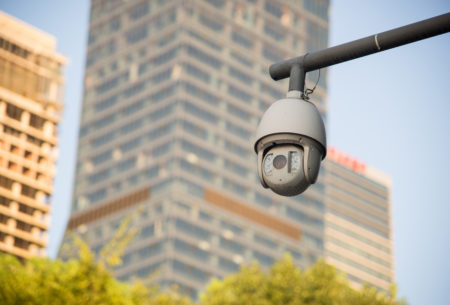
Opinion
HORIZON EUROPE
The role of society in Horizon Europe’s civil security projects

Jorge Lorente
Senior Consultant
EUROPEAN BUDGET
Most will agree, 2020 is a year to forget: the COVID crisis, endless Brexit negotiations… So let’s prepare for the future and see what the 2021-2027 period reserves for us. But why 2021-2027?


Dissemination and Communication in European Projects
2021-2027 corresponds to the Multiannual Financial Framework period established by the European Commission to redefine its large programmes and corresponding budgets. Each new budgetary period corresponds to adapted new programmes. The new budget also called “Next Generation EU” will be much stronger than expected, thanks, or rather “because” of the COVID crisis. The total amounts were agreed upon during the last 17-20 July European Summit between the heads of Member States. The total EU budget, originally proposed by the European Commission (EC), amounted to €1,074bn to be spent over 7 years. Now, with the Recovery Plan, it will be increased by €750bn. However, this additional budget needs to serve the recovery: it should be spent by 2023, at the latest. The EU estimates 3 years for the economic recovery from the pandemic. The Recovery Fund will be channelled mainly through existing programmes, increasing its overall budget, which is good news.
Several well-known programmes will continue: e.g. the traditional Common Agricultural Policy (CAP) takes a large chunk of the budget, the European Regional and Development Fund (ERDF) is 2nd on the list in terms of budget size, then comes the Framework Programme for Research and Innovation (Horizon Europe, HE). The main difference between the CAP, ERDF and Horizon Europe, is the way money is distributed. The CAP and ERDF are largely distributed indirectly through national or regional intermediaries, while Horizon Europe (and its predecessors) is directly disbursed by the EC to the direct beneficiaries, and this is expected to continue.

Despite a lot of disagreements between the Council (which represents member States) and the European Parliament, during 2021-2027 we expect several programmes to emerge or to be continued. In the area of Innovation, we can list several of them:
1. Horizon Europe, the new Framework Programme for Research and Innovation of the Union.
The EC had proposed a budget of nearly €100bn back in 2018, the Parliament then requested that €120 bn should be allocated to the Union programme. Presently, the Council’s position is to reduce the budget to €81bn, of which €5bn would be coming from the EU Recovery Plan, to be spent until 2023 on top of the rest of HE.
Horizon Europe is split into 3 vertical pillars and 1 transversal pilar + Euratom(one of the oldest EU programmes which is progressively decreasing). The share of the future budget is as follows:
The main novelties of Horizon Europe are, firstly the EIC, an agency that wishes to compare itself to DARPA in the US. It will help detect and support the most ambitious and promising Deep-techs start-ups in Europe throughout their lifecycle to ensure that Europe sees its own unicorns emerge. It is completed with an EIC Fund located in Luxembourg, that aims to provide equity for the commercialisation phase of new technologies.
Another important novelty of Horizon Europe is the Missions, there are 5 areas defined for Missions (Ocean, Cancer, Cities, Soil and Adaptation to climate changes). Initially compared with the 50’s US Mission to land on the Moon, the missions are still being defined. Everyone is eagerly waiting to see how concretely this new concept will materialise to help tackle the big challenges they are willing to address. What we know is that at least €1bn per area from across multiple programmes, EU, national or regional, should help them achieve their challenges. Will that be enough?
Partnerships within Horizon Europe, whether public-private or public-public, will take an important role in defining priorities for research and innovation, ensure better coherence between national and EU funding, as well as channel funding to strategic areas such as Hydrogen, Batteries or Cybersecurity. We now expect 48 partnerships to be launched in 2021, out of more than 200 that existed until now; a bit of rationalisation will enable smooth navigation through the labyrinth of EU programmes.
As for previous programmes, Horizon Europe will work with calls laid out in multiannual work programmes (usually covering 2 years). Drafts are already circulating; now it’s time to enter the starting blocks. The competition will be strong, and at ZABALA we are mobilising our teams to help advise clients prepare for the future.
2. Connecting Europe Facility: helping build a true interconnected Europe
This instrument has been conceived to improve interconnections in Europe in 3 areas: Transports, Energy and Telecom. It is the financial programme that helps implement the Trans-European Networks regulations in Energy, Transport and the Digital Single Market regulation. While the EC has proposed an overall budget of €31.7bn, the Parliament proposed to increase it to €43.8bn. The latest proposal of the EC in May 2020 foresaw a split of the budget in 4 subprogrammes: Transport €12.9bn, Energy €5.2bn, Digital €1.8bn and Military mobility €1.5bn. Hence a budget total of €21.4bn.
A part of the funding, €10bn (for the transport envelop) is expected to be channelled through different funds such as the Cohesion Fund or the Security and Defence budget (Military mobility).
3. ERASMUS, the Union programme for education, training, youth, and sport,
ERASMUS is probably the most well-known instrument by our younger generations. Created in 1987, it has evolved significantly since 2014 and is expected to become a major programme. At least this was the ambition of the EC when proposing to double its budget from 14 to €30bn for the next financial period. The Parliament even proposed to more than triple the budget to €46.8bn. However, Member States do not view it the same way: they proposed to reduce the budget to €21bn back in July.
Outside budget disagreements, ERASMUS is expected to contribute towards the establishment of a European Education Area by 2025. It is structured in 3 Key actions in the areas of education, training, youth and sport: Learning mobility; Cooperation among organisations and institutions; Support to policy development and cooperation. The Jean Monnet actions, which aim to spread knowledge about the European Union integration matters, are expected to be extended.
The final decision on the budget will of course clearly influence the potential impact of ERASMUS. One fear is that fewer students will be helped than in the past, should the cut be as strong as what the Council has proposed in July.
4. The European Innovation Fund, possibly the world’s largest funding programmes for demonstration of innovative low-carbon technologies
Previously known as NER400, this new instrument replaces the old NER300. More than a programme, it is a fund entirely managed by the EC, financed through the EU’s own resources, collected via the Emission Trading Scheme (ETS). The Innovation Fund will focus on highly innovative technologies and big flagship projects with European added value that can bring on significant emission reductions. The Fund’s budget is estimated at €450m to potentially €10bn for the period 2020-2030, depending on how much the ton of CO2 will be valued.
5. LIFE, the programme for Environment and Climate Action
Do you remember the Rio Earth Summit, the United Nations Conference on Environment and Development held for the first time in 1992? Well, the LIFE programme was launched the same year. The programme provides direct grants to beneficiaries to share best practices, test technologies and speed up the implementation of relevant EU legislation and policies. The programme focuses on EU Environment and climate policies. Priorities are tightly linked with the ongoing political priorities, for 2021-2027 these are: Nature and Biodiversity; Circular Economy and Quality of Life; Climate Change Mitigation and Adaptation; Clean Energy Transition, the latter being the main novelty of the new LIFE programme.
In fact, we can expect some Coordination and Support Actions in the area of renewable energy or energy efficiency dealt within Horizon 2020, or before that in the Intelligent Energy Europe programme (it disappeared at the end of 2013), to be moved to LIFE. LIFE traditionally provides support between 55% to 60% of eligible costs. One important condition to make this transfer of programme possible is the increase of LIFE’s funding rate for projects whose costs are usually financed at 100%.
The budget proposed for LIFE is €5.45bn, compared to the €3.5bn allocated in 2014-2020. Although this programme remains limited in size, this represents a significant increase and sends a clear signal in line with the Green Deal priorities.
6. Digital Europe: the new EU instrument to build the strategic digital capacities of the EU and facilitate the wide deployment of digital technologies.
This programme is brand new. For the moment, the Budget agreed by the Council is €6.8bn compared to the €9.2bn originally proposed by the EC. The European Parliament is currently “fighting” to increase the final amount to remain closer to the initial proposal of the EC. Digital Europe is organised in 5 Strategic Objectives: High-Performance Computing; Artificial Intelligence; Cybersecurity; Advanced digital skills; Deployment, best use and interoperability, mainly though the Digital Innovation Hubs.
We expect funding will be distributed through procurement actions or simple traditional grants. In principle, the revamped EASME will take care of implementing this brand-new programme.
And this is not all 2021-2027 has in store for you…
Many other programmes are set to be launched, the ones mentioned are probably the most relevant in the area of innovation, they will mainly provide direct grants. A large part of EU’s budget will be redistributed more locally (at a regional or national level) through other funds such as the European Regional and Development Fund, the European Social Fund, the Just Transition Fund or the Common Agricultural Policy. The budget should be finalised, hopefully before the end of 2020. But don’t worry, the EU funding machine will not stop working. A budget proposal for the year 2021 has already been handed over from the EC to the Council and Parliament, and programmes will run again as from January 2021.
2020 was a difficult year, we are reaching its end; it is now time to prepare for the next EU financial period. Whether it be a direct EU grant or regional funding, there will be many opportunities for everyone. So, let’s get ready!

Madrid Office
Dissemination and Communication in European Projects

Opinion
HORIZON EUROPE

Jorge Lorente
Senior Consultant

Opinion
CITIES

Getting prepared for 2021-2027, what does the future European budget have in store for me?

Opinion
Clean energy

Thomas Zimmer
Consultant and LIFE CET expert – EU projects

News
ETIP SNET

Opinion
BIOECONOMY

Néstor Etxaleku
Agrofood and Bioeconomy Knowledge Area Leader

Publication
CITIES
Check out our downloadable document that summarises EU funding opportunities for urbans projects
The important thing is not to keep moving, but rather to know in which direction to go. Our 37% success rate proves that we know how to guide our clients.
This website uses cookies so that we can provide you with the best user experience possible. Cookie information is stored in your browser and performs functions such as recognising you when you return to our website and helping our team to understand which sections of the website you find most interesting and useful.
Strictly Necessary Cookie should be enabled at all times so that we can save your preferences for cookie settings.
This website uses Google Analytics to collect anonymous information such as the number of visitors to the site, and the most popular pages.
Keeping this cookie enabled helps us to improve our website.
Please enable Strictly Necessary Cookies first so that we can save your preferences!
This website uses the following additional cookies:
(List the cookies that you are using on the website here.)
Please enable Strictly Necessary Cookies first so that we can save your preferences!